We have a huge problem with reporting on keyword rankings.
On one hand, SEOs have grown accustomed to monitoring their search engine rankings and using those metrics to determine success.
On the other, results pages have changed so much that reporting on just the rank position doesn't reveal the full impact of SEO on the company's bottom line.
So, how do you create an SEO rankings report that accounts for these changes in search visibility? What do you include to make the ranking data valuable and actionable for the key stakeholders?
The answer to these questions starts with a look at why traditional rank tracking is broken.
Table of Contents:
- What Is an SEO Ranking Report?
- Challenges When Creating a Ranking Report
- How to Account for Changes in Search Visibility in a Ranking Report
- How to Overcome New Search Visibility Challenges
What Is an SEO Ranking Report?
An SEO Ranking Report details where your website's pages stand in search engine result pages (SERPs) for targeted keywords. It highlights the performance of your keywords, tracking improvements or declines over time, which is crucial for understanding the effectiveness of your SEO strategies.
These reports also play an important role in helping earn buy-in by showcasing the value of SEO to executives.
Beyond mere rankings, SEO ranking reports can also shed light on competitive positioning and unearth opportunities for optimization.
Essentially, an SEO Ranking Report acts as a compass, guiding SEO professionals in refining their strategies to enhance visibility, drive traffic, and ultimately, boost conversions.
Challenges When Creating a Ranking Report:
The Problem with Traditional Rank Tracking
Consider how you currently track your rankings. You set up a rank tracker to do one thing: assess where your domain is on the SERP for a given keyword.
And there are many types of rank tracking tools on the market.
Of course, an advanced rank checker delivers more insights than just the rank. It tells you what other search listing types it found on the page and additional information about those insights.
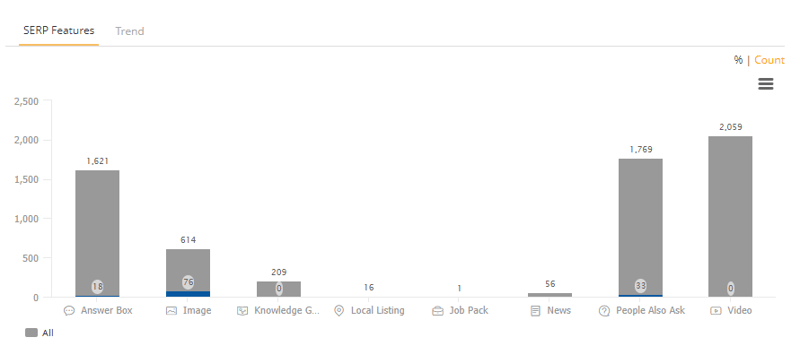 (SERP Features view in seoClarity.)
(SERP Features view in seoClarity.)
Unfortunately, assessing rank position today is proving more and more difficult.
For one, Google search results differ between users. Google personalizes them to a person's location, search history, and other factors.
Then, there's the whole issue of mobile vs. desktop rankings.
SERP dynamics are different too. The search engine expands search results constantly, after all. Just look at the progression of the SERP for the query "hotels" over the years:
In short, with all the various SERP elements – video carousel, ads, featured snippets, and so on – rank position one doesn’t guarantee strong search visibility.
The Value of Rankings Has Changed
Since search rankings fluctuate between users, their computers, and locations, it's almost impossible to confirm with any certainty the one true keyword rank position of a page.
What's more, a page can rank for tens or hundreds of keywords of varying search volumes, many of which you hadn't even thought of when creating it.
In the past, we could associate ranking at the top of SERPs with an almost guaranteed increase in organic traffic.
Today, however, we can never be that certain.
Unfortunately, there’s even more bad news for SERP chasers: such reduced visibility results in lower engagement. As a result, fewer users notice your listing.
The above, in turn, could translate into a smaller CTR, traffic, and results. All key KPIs for SEO.
Recommended Reading: Reporting SEO: How to Take SEO Reports to the Next Level
How Users Interact With SERP Results Has Changed
In the early years of eye tracking for results pages, studies observed what was called a "golden triangle" or F pattern, where searchers would glance first at the top organic results, then over to the ads in the right sidebar, and then (to a lesser extent) back down to a few more organic results.
Then in 2014 a white paper from Mediative called “The Evolution of Google’s Search Results Pages & Effects on User Behavior” outlined a new search pattern among searchers.
The study showed that by 2014, users were following a more vertical pattern. This is largely because Google introduced other search listing types in various sections of the page (such as moving the top three or four ads to the top of the main column).
Plus, mobile devices have changed the way we interact with the search results.
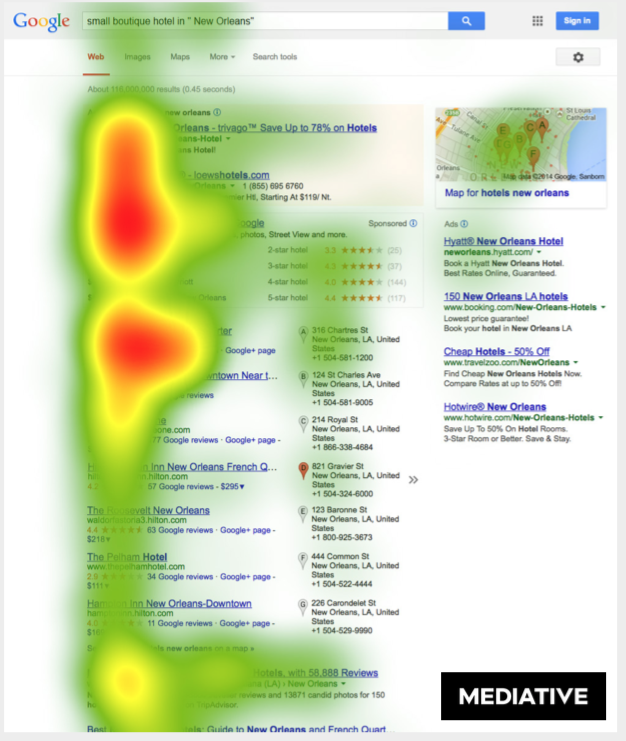
(Screenshot from Mediative’s white paper showing the new search pattern.)
More recently, a November 2019 study by the Nielsen Norman Group revealed that with the growth of SERP features the searchers have shifted to what they call a "pinball pattern" where their attention bounces all over the SERP.
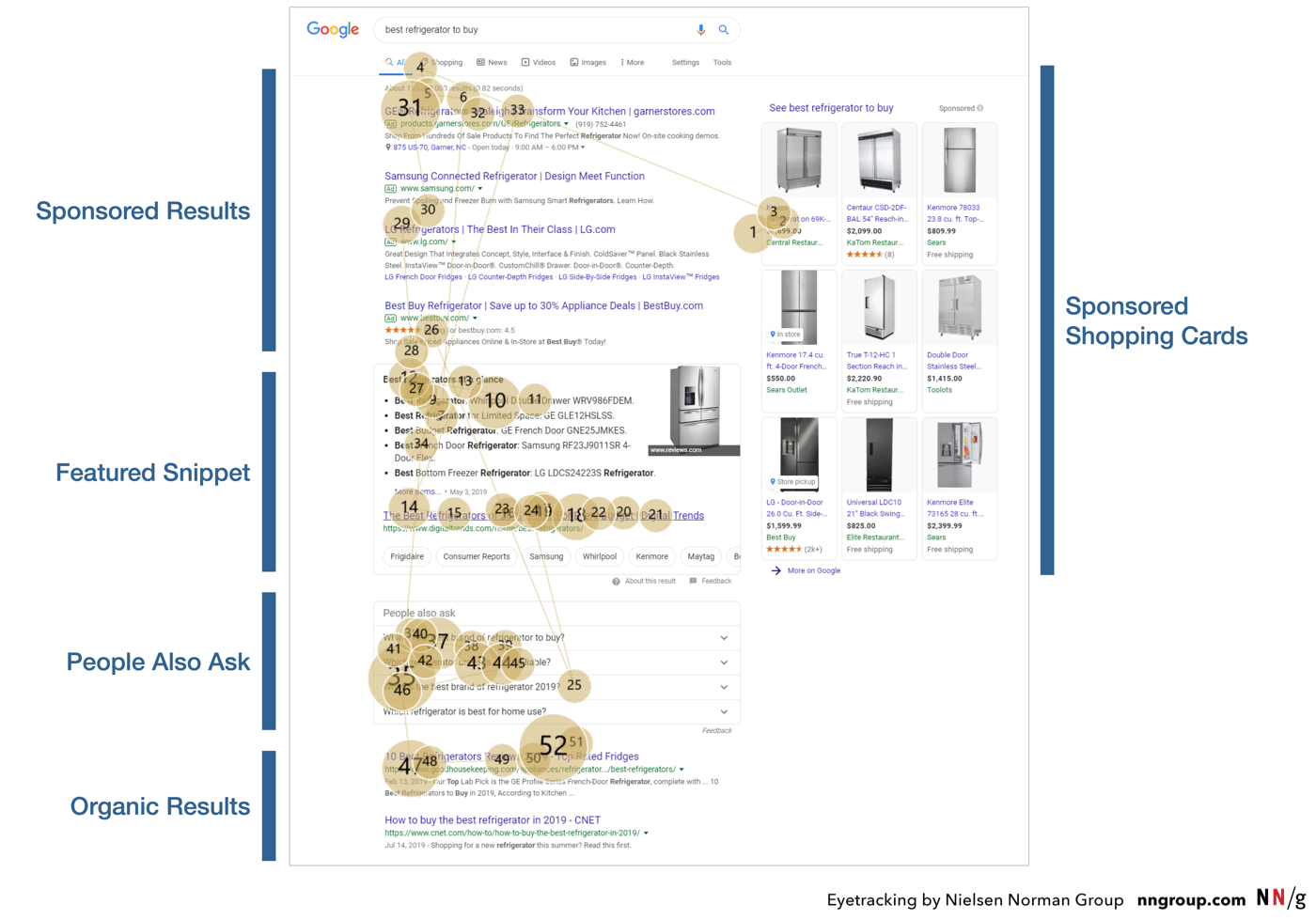
All these changes result in Google’s users no longer choosing the top-most listing by default. Instead, they scan the page, looking for listings that promise the exact information they seek.
Does It Make Sense to Track Keyword Rankings At All, Then?
Absolutely, although you need to be more conscious of all the factors I referenced above when doing it.
Rankings are, after all, what executives care about as a main KPI.
Recommended Reading: Highlight Your Wins With Custom SEO Dashboards
Much more so than the number of backlinks you've built or the audits you've set up.
You see the importance of backlinks for authority and audits for technical clarity, but rankings draw a clearer picture for your executives:
- They indicate SEO success, although, without the precision they once had.
- Rankings indicate potential problems with SEO. Sudden ranking fluctuations might suggest algorithmic or other changes affecting your site's visibility.
- They offer insights to determine potential issues with your site.
- Provide an overall analysis of your SEO efforts.
For even more reasons why you should continue to track your rankings, I recommend this resource: Yes, It's Still Important to Track Keyword Rank
That said, I recommend a new approach to SEO rank reporting
How to Account for Changes in Search Visibility in a Ranking Report
We’ve already established a flaw with the traditional rank reporting. You know that rank position does not always correspond with your actual search visibility.
But, what can you do to report on it? Is there another approach to reveal the true value of your rankings beyond a generalized template?
As a matter of fact, there is another approach here.
Doing so, however, requires using a different way to evaluate the SERPs. Instead of relying on ranking position as the main metric, you must turn to measure the pixel height of every element on the SERP to evaluate how far down is your listing.
We call this Share of Visibility.
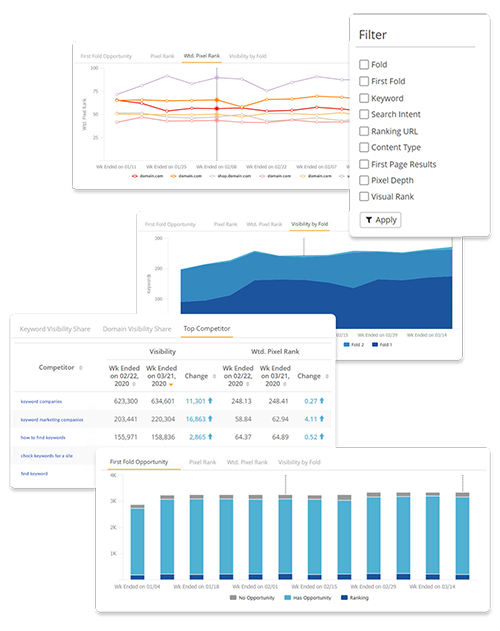
By approaching rankings this way, you establish whether your listing is visible when the page loads or if a user has to scroll to reach it. Plus, it tells you how many scrolls it takes.
This goes well beyond your traditional SEO ranking report or any other analytics tool. (Although, Google Analytics is an essential for any SEO!)
Analyzing the pixel height delivers another critical insight: it tells you how much real estate you have on the page for your keyword. Because, depending on the type of listing, your domain may appear as a small listing or a box-sized result.
Share of Visibility is here, far surpassing other rank reporting tools on the market.
See how SpareFoot leveraged Share of Visibility to increase organic CTR by 20.8%
How to Overcome New Search Visibility Challenges
Now that you know how to report on rankings despite search visibility changes, let's go over some methods on how to adapt your SEO strategy so that your performance shines.
As an SEO, you need to change your thinking when it comes to rankings – the SERP is changing, and you have to keep up. So, what can you do to eliminate the negative effect of lower rankings?
I recommend the following three strategies.
1. Aim for a good rank, rather than a top one
Historically, an SEO’s goal was to reach the top of the SERPs for certain keywords with a good search volume. Enjoying the first position guaranteed the highest click-through rate, visibility, and user engagement, after all.
But, as we’ve already discussed, that’s no longer the case: a top ranking doesn’t automatically translate into traffic.
Fortunately, the new way users interact with the search results also suggests that the opposite is true: a lower ranking position might generate engagement, too. The only requirement for it to happen is that users notice your listing.
So, instead of putting all effort into reaching the top spot, focus on optimizing your listing for engagement.
In short, ensure that it stands out from other domains you compete with on the page.
One way to do this is through implementing schema markup. Incorporating the schema markup to your listings allows it to stand out among the crowd, plus it enhances search visibility.
Here is an example of a SERP listing that has incorporated the FAQ schema and star rating:
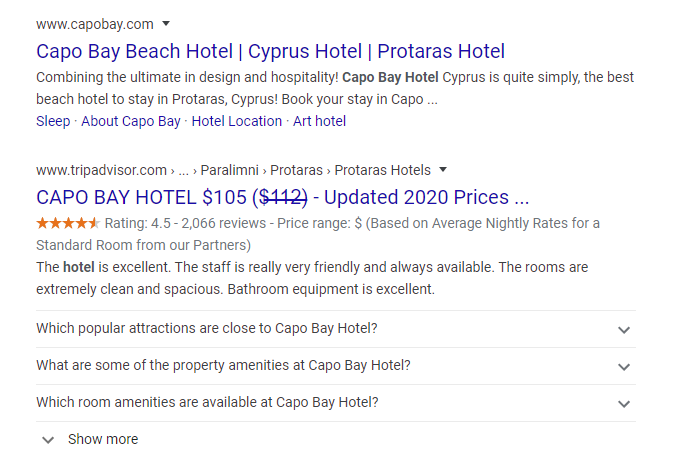 (SERP for the search query "capo bay hotel.")
(SERP for the search query "capo bay hotel.")
The feature draws the searcher's eye to the listing and offers more information directly on the SERP, which increases the value of your listing as well.
Even though the TripAdvisor listing is below the URL for the actual hotel resort, the schema makes the listing attention-grabbing.
You can also use Content Fusion, our AI-driven content optimization tool, to get an inside look at how the competitors structure their content. Content Fusion analyzes the top-ranking sites’ metadata for your target keyword, and reveals patterns and key terms they use in their listing structure.
Similarly, check which of the most converting words your competitors use (and which ones they don’t) to spot opportunities to attract your audience’s attention.
For example, for the query “things to do in Chicago,” I use Content Fusion to see what meta-titles and descriptions the top-ranking websites have. Based on that, I can write metadata that stands out and includes the most critical on-page elements.
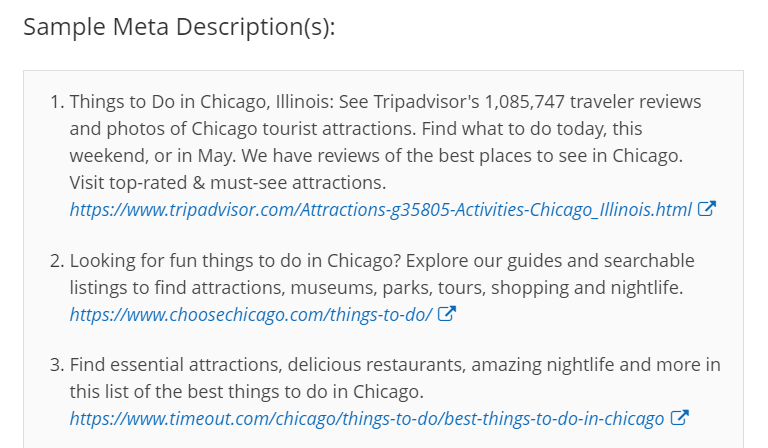
(Metadata report in Content Fusion.)
2. Compete for the other SERP features
You cannot stop other SERP elements from pushing your listings down the page — but you can join them!
Recover some of that lost visibility by positioning your domain in those search listing types as well.
For example, identify which queries trigger the Answer Box and then target it by writing content optimized to appear there.
Similarly, if your brand produces videos regularly, YouTube SEO strategies can help them rank in the search results as well.
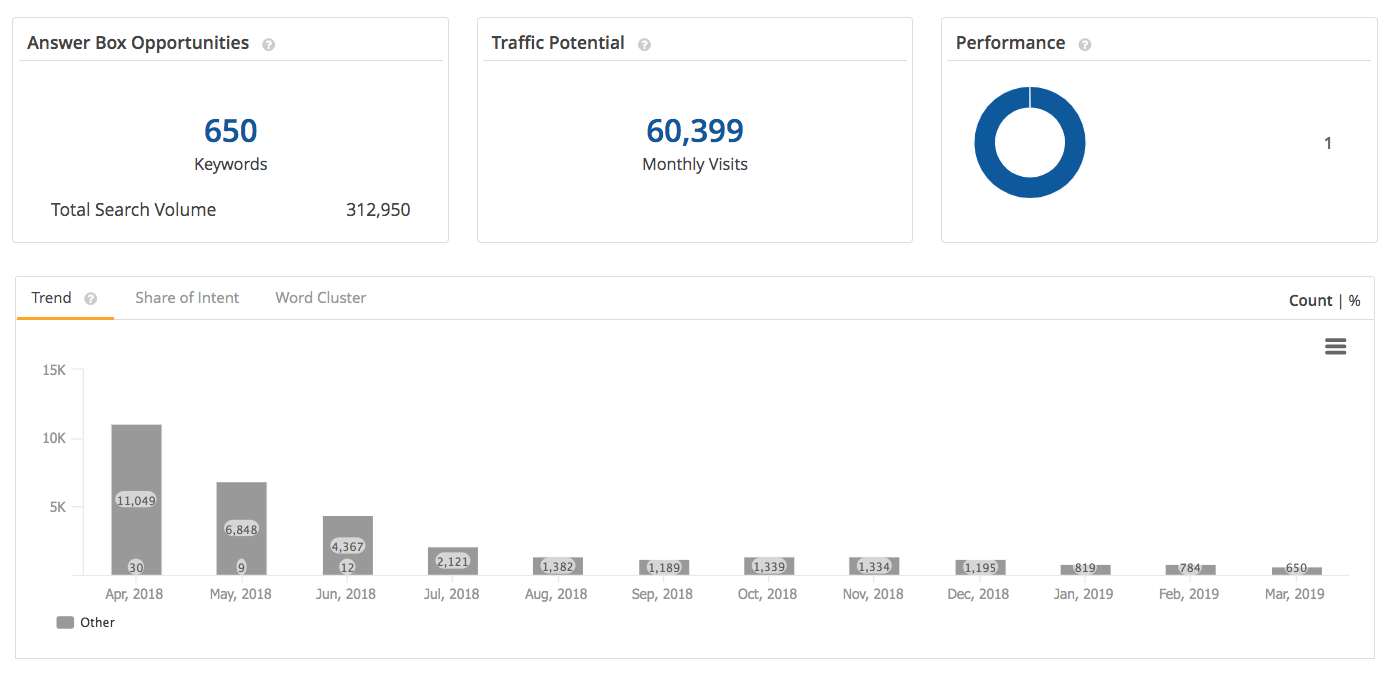
(The Answer Box report in seoClarity.)
3. Increase your page’s relevance to rank it for more keywords
Finally, update your content to ensure Google understands what the page is about better and ranks it for more relevant phrases.
Use Content Fusion to research what additional topics to cover on your page to be an authoritative source. It evaluates the top-ranking content and delivers insights on:
- Keywords and semantic phrases to add:
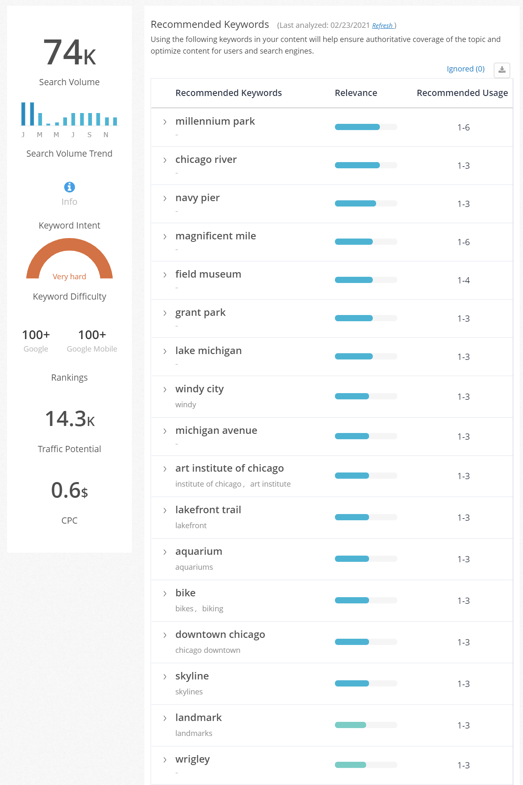
- Other topics users search for about your main keyword:
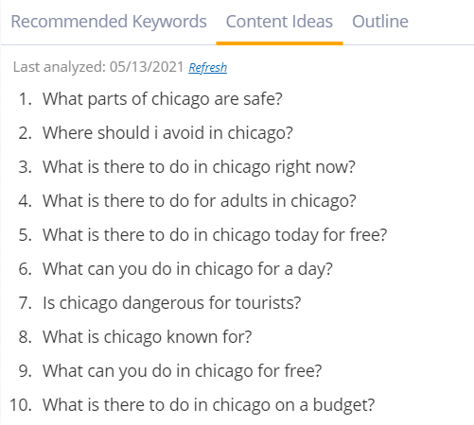
- Outline structures of top-ranking content:
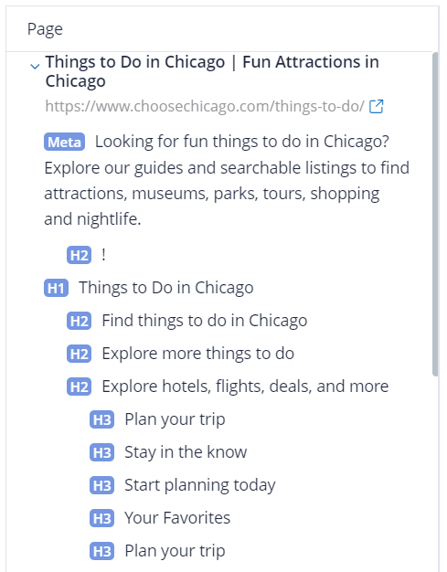
With even simple content tweaks, you’ll create a page that’s more relevant to what your audience is looking for, position it as a more authoritative resource, and increase the number of search phrases it will rank for.
Don't just take it from me — see 7 real-world examples of how Content Fusion increased search visibility.
Conclusion
Google search results pages are no longer a static list of results we’ve known for so long.
All the new elements – the video carousel, featured snippets or PLAs – have changed the value of rankings. As a result, top positions no longer guarantee user attention, a solid click-through rate, or traffic.
Rather than be discouraged by these changes, it's time to reevaluate your rankings and think about the SERP differently. You must evaluate the SERP real estate that your domain actually covers. By doing this, you increase the value of the rankings you already hold.
seoClarity's Share of Visibility allows you to keep your SEO ranking reports in line with the current SEO climate. Enhance your ranking reports with this revolutionary way to analyze and target your visibility in the SERP. Schedule a demo with our team today.
Editor's Note: This post was originally published in January 2019 and has been updated to reflect the most up-to-date information in the SEO industry.






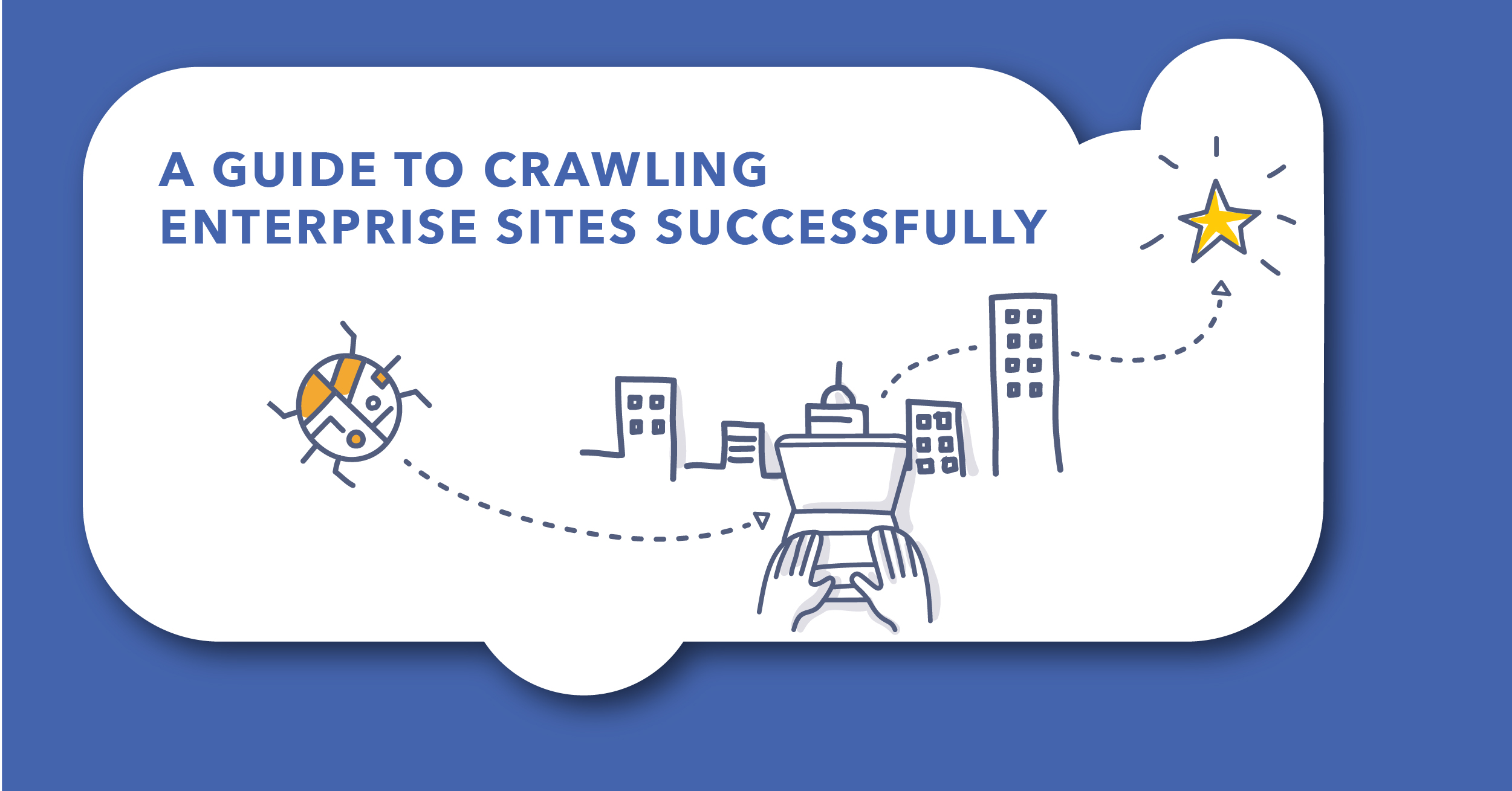
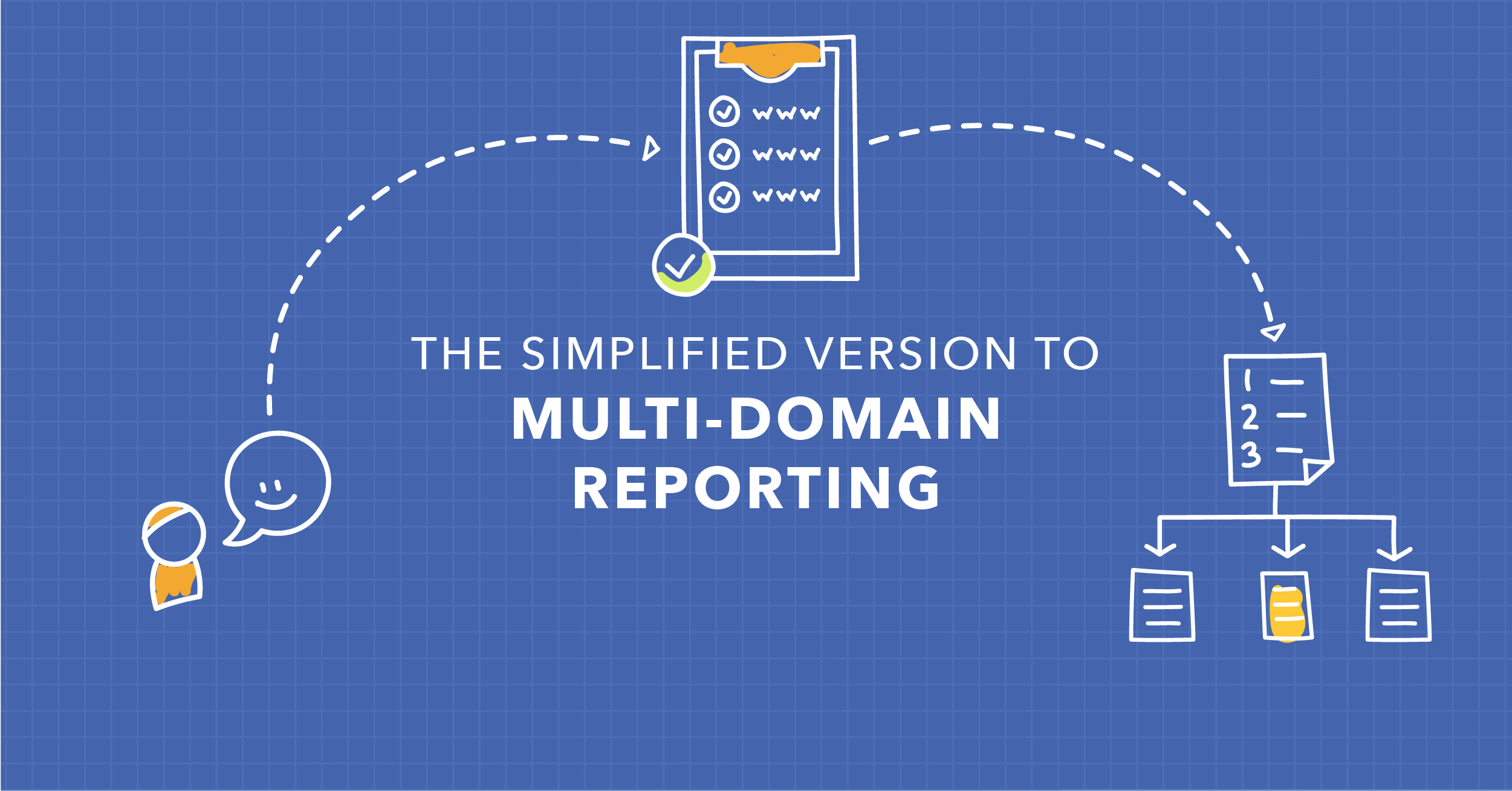

Comments
Currently, there are no comments. Be the first to post one!